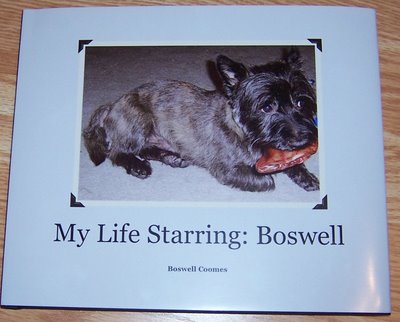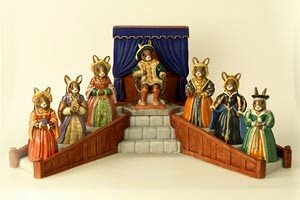Bob, bless his heart, is entitled to his opinion, and I only wish he'd posted it before I went shopping today so I could have consoled myself with an extra pair of jeans. As it is, it's given me a chance to indulge in some Teddy Grahams (cinnamon graham cookies shaped like teddy bears, for you folks across the pond) without guilt.
My Southern graciousness toward Bob did wear a little thin here, though:
Whether the homosexuality of Edward II is a fact or a figment of the author's imagination I don't know. Nor whether its use here is more than an attempt to meet to what some consider the "correct" tone of the present times.
Which makes me wonder: Will some author next come up with... "Washington & Lafayete, A Story of Forbidden Love?"
Cute, very cute. But Bob, a few short minutes of Googling might have cleared up this difficulty for you. Edward II's homosexuality isn't a fact--no one knows whether he had sexual relations with his male favorites or not--but it's very far from being a figment of my lurid, politically correct imagination. Suggestions that Edward II was involved in sexual relations with men date back to the fourteenth century, well before my time, thank you very much, and I'm merely following in a long line of writers, both historians and novelists, who have depicted his relationships as homosexual. (The only respect in which I differ from other novelists, as far as I know, is that I depict him as having heterosexual relationships outside of marriage as well--a depiction that is borne out historically by his acknowledged out-of-wedlock son, Adam, and near-contemporary rumors that he had been having an affair with his niece.)
Just to set the record straight, so to speak.
Anyway, speaking of long novels with a lot of characters, I'm reading Margaret George's Mary Queen of Scotland and the Isles and am enjoying it thoroughly. For my own part, when a historical novel takes place over a long period of time and involves complex events, I'd rather have it be a long novel with many characters than a short one with just a few characters. Sharon Penman's The Sunne in Splendour (1459 to 1492; long) and Juliet Dymoke's The Sun in Splendor (from around 1464 to 1489; short), for instance, both cover the Wars of the Roses and Richard III's fall and include some of the same events. They take very different approaches, with Penman telling the story through the viewpoint of many characters and Dymoke telling it through one, that of a woman who knows most of the major players but who is often at the periphery of events. I find Penman's approach more satisfying, and Dymoke's novel, though readable and agreeable, strikes me as skimpy by comparison. It's a matter of taste, I guess--what's yours?





